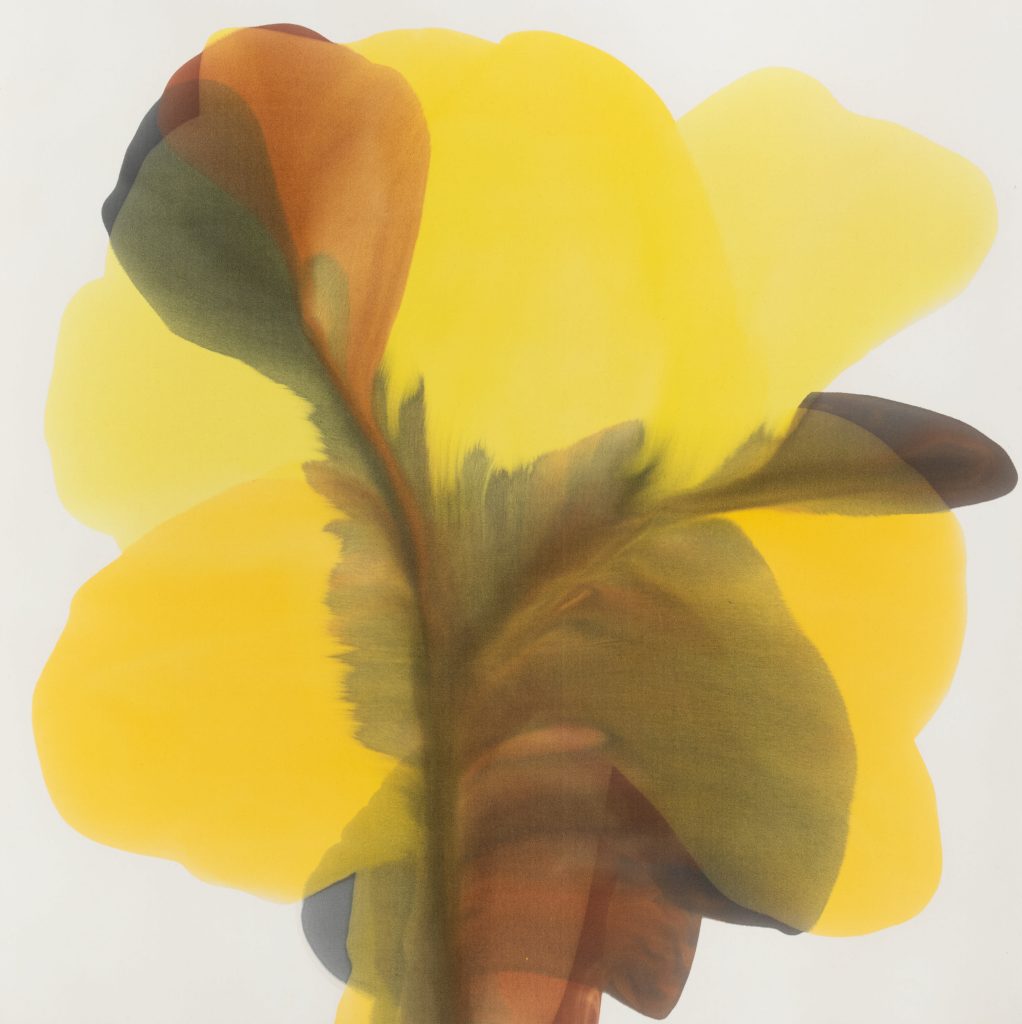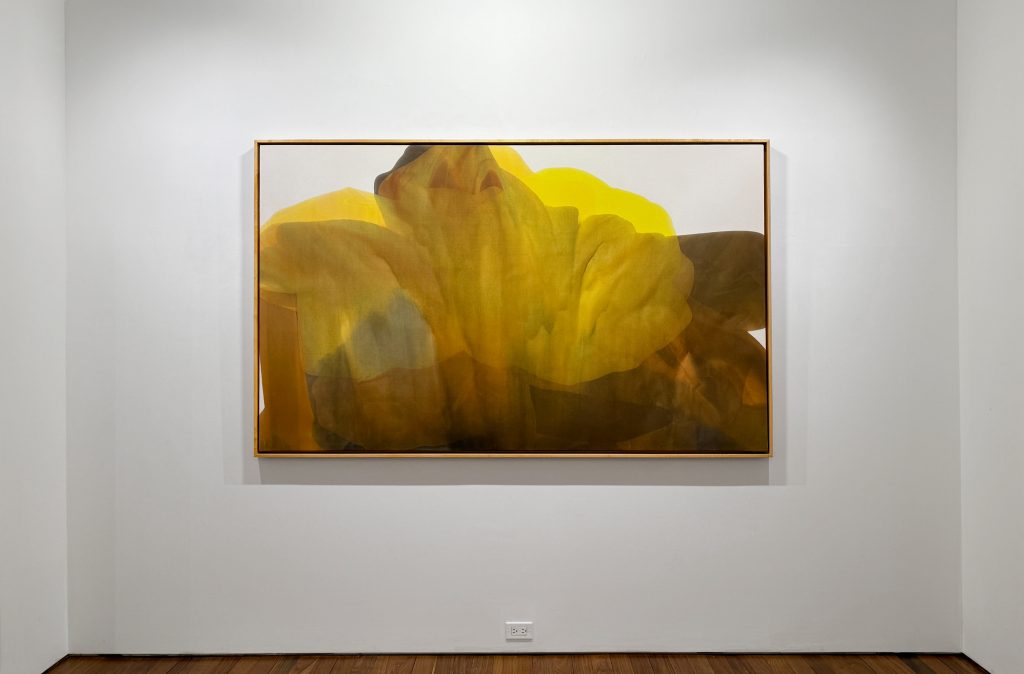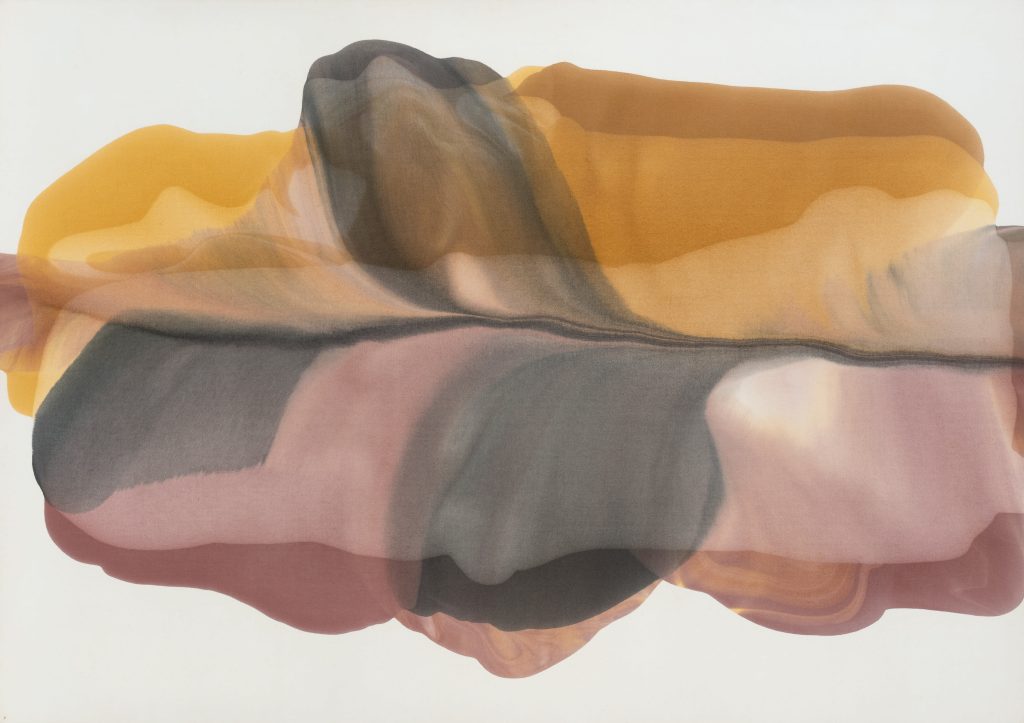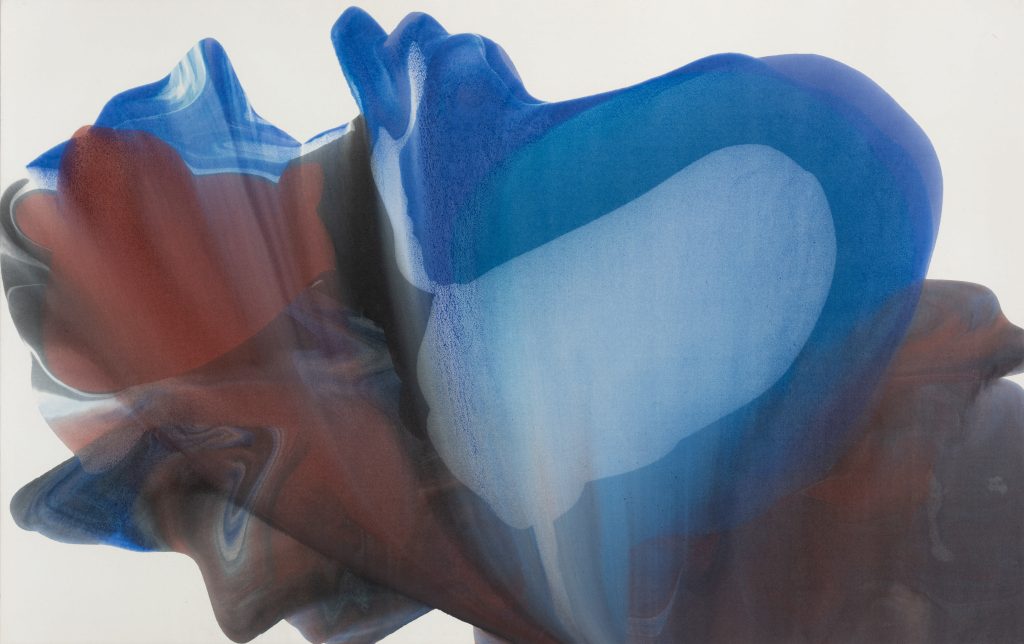The paintings in “I Cast My Own Shadow,” a new exhibition at Hollis Taggart gallery in New York City of the late artist Irene Monat Stern, are shockingly beautiful. They’re elevating moments of forceful illumination that unite the interior and psychological with the blossoming, natural world.
Irene Monat Stern in California
Behind these paintings, Stern was looking towards that natural world in southern California, to which she moved in 1965. The gallery connects the specifics of these artworks to the look and feel of phenomena of the natural world like rolling waves and blossoming flowers, and the paintings themselves show that’s a very apt parallel to draw. Visually, the flowing fields of color resemble, say, flower petals.
But in these paintings, Stern didn’t create photorealistic copies.
Most of the artworks are untitled, but in the pieces where she utilized yellow and gold — hearkening towards our world’s constant flows of life-facilitating sunlight — she seemed to freeze moments of that light spreading across its surroundings before saturation is complete. We probably tend to miss in our lived experiences under that sun how the physical processes that lay out the biological and environmental red carpets for our species and the many others on this planet are actually, at least in a rhetorical sense, living, breathing, and pulsing processes that fuel not just physical minimums but growth — and the billowing care that is embedded in that.
It’s not just about physically creating an arena of sorts in which living things grow and, eventually, die. Rather, possibilities for relationship, mutual support, legacy, assistance, and much more seem foundational to what’s being offered, as viewed through Stern’s paintings. We can do so much! The forms, whether imagined or literal, of this planet’s gears of life are, in the world of this art, constantly speaking and singing, with the open question just whether or not we will actually listen. But that enveloping wash of illumination and warmth: it’s there.

Moving Upwards, to the Sun
Shifting in precise form, orientation, and color, Stern’s artworks in this exhibition all featured flowing layers of thin paint, all of it distinctly pushing upwards and outwards, like a plant searching for the sun or waiting for the rain.
A favorite, Stern’s “Windblown” (circa 1970s) blends burgundy, burnt sienna, and a couple of blues including one that reminds me of the deeper ocean: that part of the water you can see sometimes from the shore where the blue gets more intense as the ground level underneath drops off dramatically. And the colors look, to me at least, like they’re moving both left to right and up and down, emanating from a central through line like a tree of light.
It puts the personal — the sense of touch suggested by the darker colors — in direct parallel to the cosmic, blending them all without any sense of tension. Instead, they again all flow upwards and outwards.
And in these paintings, Stern does that time and again. The artworks give form to light and its compatriots but leave it all unfettered and free-flowing, showcasing a uniting vision.
I am also struck by the feeling that Stern’s approach across these paintings is subtly but stirringly monumental. The sizes vary, but I’d say they’re all pretty mid-size to slightly large as painting standards go, but in the context of what she was unfurling, the gestures come across as grand.
For one, though there aren’t super obvious references to precise environmental unfoldings in Stern’s paintings, some of what she’s nodding towards, even just on an emotive level, is either ordinarily much smaller or more fleeting than what she’s done here. Her paintings seem to slow down the process of illumination, allowing us to become enveloped and enriched by a captivating movement of light into place.
And in the specific contents, Stern’s paintings in this exhibition tended to feature just a few flows of color at a time, letting each move without much of anything at all in its way. Instead, each long arm of color was left front and center: an uplifted surge, imparting power. The paintings were a chance to look light, presence, and place in the rhetorical eye, with an appropriate, quiet majesty.

Intertwining
And in layering these individualized flows of thin, acrylic pigment as she did, Stern distinctly centered those possibilities of relationship and interconnection.
Whether in the natural world or constructed, human communities, the stark reality tends to reveal itself that one impact leads to more, elsewhere. Relational power seems like an integral part of these paintings’ vision of the world: an image of mutual uplifting and shining indefinitely, as forces connect and advance. That forward progress is a central energy of these paintings. Nothing is consumed, just expanded. The paintings are remarkably weightless thanks to both the particular forms of Stern’s waves of color and the thin, internally illuminated manner in which she used the acrylic paint.
I don’t think this is new to our contemporary environment, but our struggles against a stifling insistence on rigidity — escalating to violence — suggest the passion of Stern’s paintings is necessary. Her paintings are an invigorating insistence on life.
“Irene Monat Stern: I Cast My Own Shadow” continues at Hollis Taggart, New York, through November 16, 2024. (This was extended through December 21.)


Featured image: caption above
You may also like
-
Diana Kurz at Lincoln Glenn in New York: A Review of a Shining Art Exhibition
-
Dustin Hodges at 15 Orient in New York City: An Ensnaring Exhibition at an Exciting Gallery
-
Maren Hassinger at Susan Inglett Gallery in New York: Reviewing an Uplifting Art Exhibition
-
Enzo Shalom at Bortolami in New York City: Reviewing an Entrancing Exhibition of Paintings
-
“Ben Werther: Townworld” at Amanita in New York City: Reviewing a Richly Memorable Art Exhibition